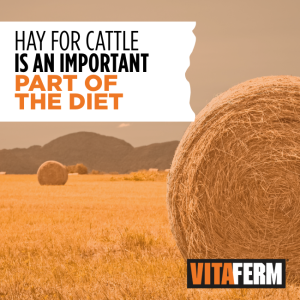
Providing adequate winter cattle shelter is essential for herd health and well-being during the coldest months of the year. Yes, cattle are fairly cold-tolerant. However, the combination of wind chill and moisture can lead to cold stress, which leads to lowered performance and decreased immune response.
At VitaFerm®, providing quality nutrition is our main priority. We do that by providing a line of nutritional supplements for beef cattle that maximize energy and forage utilization for successful production. However, we know that nutrition is just part of the equation. We want to provide cattle producers with valuable information to help increase their bottom line.
We discussed how cold can cows tolerate. Well, turns out it’s a complicated question. When discussed, cattle, lower critical temperature (LCT) is influenced by both environmental and animal factors. These factors include a combination of wind chill, humidity, hair coat, and body condition score. The LCT for most cows in gestation is about 18 degrees Fahrenheit, but depending on various factors, they can survive much colder temperatures.
That’s why our team created this blog. We want to help you prepare for those severe winter storms to keep your herd protected from the elements before they hit.
Winter Cattle Shelter Guidelines
Here are 5 guidelines to consider when preparing winter cattle shelters.
1. Provide Windbreaks
Windbreaks can be both natural and man-made. Plant rows of trees or shrubs to reduce the wind chill. A hilly area can also serve as a natural wind barrier.
If trees are not an option, construct windbreaks from materials like wood, metal or fabric. These structures should be placed to block prevailing winds.
2. Design Shelter for Comfort
Build open-sided barns or three-sided sheds to provide shelter from wind, snow and rain. The open side should face away from the wind, typically southward. Each cow needs about 40-50 square feet of space. Ensure the shelter area is big enough to comfortably house your herd.
Good airflow is crucial to prevent respiratory diseases and mold growth in the shelter. Ensure proper ventilation to avoid condensation and moisture build-up. Additionally, we suggest installing vents or leaving space at the top of the shelter walls to promote air circulation.
3. Protection from Mud
Provide deep bedding with materials like straw, corn stalks or wood shavings to insulate against cold ground. Regularly replenish bedding to keep it dry and warm.
It is also vital to provide proper drainage around the shelter and windbreak, which prevents mud. Mud can cause hoof problems and stress cattle. Gravel pads or dry-lot pens can help keep the ground dry.
4. Water & Feed Access
Water and feed is even more essential to your cattle during the cold months make sure cattle have access to both, especially when they are confined during storms or extreme cold.
Use heated or insulated water troughs to prevent freezing. Ensure a consistent supply of clean water.
In cold weather, cattle consume more feed to generate body heat. Plan to increase rations and ensure there is a sufficient supply of forage. Ensure feed is easy to access without cattle needing to travel far. Keep feed close to or within the shelter.
5. Be Prepared for Severe Weather
We obviously don’t have to remind cattle producers to check the weather. If they have properly prepared a winter cattle shelter, they should be prepared for heavy snow, freezing rain and extreme cold.
We do recommend having an emergency plan in place for blizzards, such as moving cattle to barns or bringing in extra feed supplies. Finally, keep cattle calm and avoid overcrowding in confined spaces, as stress can lead to health issues.
VitaFerm Can Help Your Herd Battle the Cold
In addition to providing a quality, well-ventilated, bedded down winter cattle shelter, your herd also needs high-quality nutrition during times of cold stress. That’s where VitaFerm can help. VitaFerm mineral supplements powered by AO-Biotics® Amaferm® can help with both nutrition and digestion, helping decrease cold stress.
Amaferm can help unlock the nutritional value of all types of forages. Amaferm goes beyond stimulating the growth of beneficial rumen bacteria and can also promote rumen fungal growth and enzymatic activity. This increases fiber digestibility and volatile fatty acid (VFA) production by 17% and 16%, respectively. Therefore, more energy becomes available to your cows, leading to more performance.
Digestion is Key to Healthy Cattle
In addition to increasing body temperature, Amaferm also helps your feedstuffs and forages go further, helping decrease the overall cost.
“Research proves that cattle fed Amaferm synthesize 143 more grams of microbial protein each day. That’s enough protein equivalent to a pound of supplemented soybean meal available for the cow or heifer. This additional protein generated from Amaferm in a year-round supplemental program can help producers reduce their need for additional protein by up to 40% annually. This offers produces a huge continuous savings on feed costs,” Cassady said.
Providing proper winter cattle shelter and quality nutrition for herd ensures their health, safety and productivity during cold months.
Get Your VitaFerm Today
A good nutrition program works synergistically with a winter cattle shelter to keep your cattle healthy and performing. You can get your VitaFerm products today to plan ahead for winter.
At BioZyme, we give you options within the VitaFerm line. Not sure what to feed cows when it comes to the VitaFerm line? Check out our Concept•Aid Product Navigator.
Get your VitaFerm products from an authorized BioZyme dealer today. Our extensive dealer network is here to help you meet mineral needs.
Want to learn more about VitaFerm and our other products? Sign up for our electronic newsletter to stay in the know!


